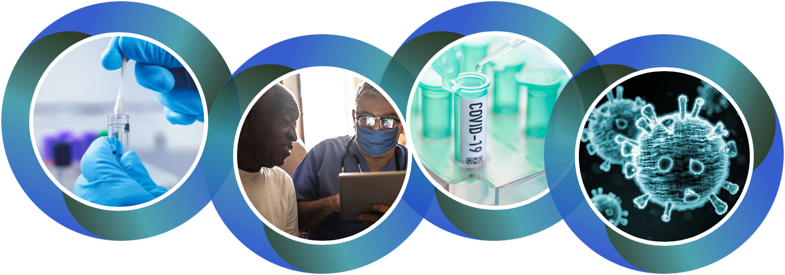Rapid Acceleration of Diagnostics (RADx®)

Overview
The National Institutes of Health (NIH) launched the Rapid Acceleration of Diagnostics (RADx®) initiative to speed innovation in the development, commercialization, and implementation of technologies for COVID-19 testing. Accurate, fast, easy-to-use, and widely accessible testing is required before the nation can safely return to normal life.
The RADx initiative is a national call for scientists and organizations to bring their innovative ideas for new COVID-19 testing approaches and strategies. Funded projects include new applications of existing technologies that make tests easier to use, easier to access, and more accurate. At the same time, NIH is seeking opportunities to move more advanced diagnostic technologies swiftly through the development pipeline toward commercialization and broad availability — with the goal of making millions of tests per week available to Americans, particularly those most vulnerable to and/or disproportionately impacted by COVID-19, and having even more tests available in time for the 2020–2021 flu season.
NIH is working to expand testing development and distribution across the country, in partnership with sibling and other government organizations such as the Biomedical Advanced Research and Development Authority, Centers for Disease Control and Prevention, Defense Advanced Research Projects Agency, and U.S. Food and Drug Administration. Through this effort, we will strive to better understand the range of testing methods and approaches through engagement with specific communities, including those in underserved areas and with vulnerable populations.
Challenge
The rapid worldwide spread and impact of COVID-19 has created a need for accurate, reliable, and readily accessible testing on a massive scale. Returning safely to normal life depends on our ability to streamline and speed up the testing process. However, this is no small feat. The tests must provide accurate, quick results with as few false negatives and false positives as possible. Testing must also be inexpensive, user friendly, widely accessible in a variety of settings and locations, and able to detect people who are asymptomatic. Most importantly, we need to understand barriers to being tested, even when tests are accessible.
Opportunity
To meet this challenge, RADx created programs that will make it possible to rapidly scale-up testing across the country and enhance access to those most in need. While diagnostic testing has long been a mainstay of public health, newer technologies offer patient- and user-friendly designs that work with cellphones, for example, to lower cost and increase accessibility both at home and at the point of care.
Accomplishments
The RADx initiative has introduced innovative approaches to testing that have resulted in enhanced testing capabilities, improvements in diagnostics and detection, and improved implementation strategies for reaching underserved and vulnerable populations. These documents capture the knowledge gained and lessons learned from RADx, offering insights on how to rapidly address gaps in diagnostics and detection strategies during future public health crises.
This page last reviewed on


